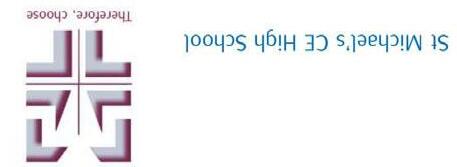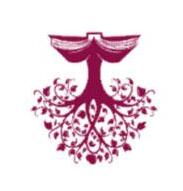

Throughout years 7, 8 and 9, pupils follow a carousel system where they spend approx. 8-9 weeks within each of the four different subject areas across Technology; Art, Design & Technology, Food prepara on and Nutri on and Tex les
Overview of intended learning in Yr 7
Art & Design
Pupils in year 7 build upon key skills and knowledge they completed at KS2, by being introduced to the formal elements of art. Pupils will be taught how to draw a portrait and the importance of careful observa on to gain a good grounding in basic drawing skills, using line, tone and texture. Pupils will study the work of a range of ar sts (tradi onal and contemporary, western and non-western) and look at the similari es, differences and connec ons between them. Pupils will also gain experience exploring sculptural skills, through the use of clay.
Tex les
Pupils in year 7 build upon key skills and knowledge they completed at KS2. Pupils complete a ques onnaire at the beginning of the course to iden fy prior learning, knowledge and skills.
During this course pupils will develop their research, designing and making skills, the elements which are the founda on structure to all future projects. They will develop a range of prac cal skills and learn how to successfully work through a project to create personal responses to a star ng point. They will learn about health and safety in the tex les room and the importance of looking a er equipment and materials. They will have learn to be prudent with materials.
Design & Technology Food Prepara on & Nutri on
Pupils in year 7 build upon key skills and knowledge they completed at KS2. They are introduced to the design cycle, where they complete a range of research tasks. From this they develop their design skills in the style of Charles Rennie Macintosh, using their research to support them. Pupils are introduced to techso 2D design to develop their understanding of CAD & CAM. They are introduced to the workshop where they will cover Health & Safety of the workshop. Then they will develop their prac cal skills in using a range of hand tools to produce a high-quality key fob, for a mobile phone holder. They will then have their design laser cut onto their key fob.
Pupils in year 7 build upon key skills and knowledge they completed at KS2. Knowledge and skills include use of basic kitchen equipment, basic prac cal skills, origin and simple func ons of ingredients, healthy ea ng and the Eatwell Guide and food choice.
Topic/Big
Ques on
Theme(s)
Portraits- How have portraits evolved over me?
Formal Elements of Art: Line, tone, texture, shape, colour, space
Ar s c skills and techniques- Picasso
Key Knowledge

• Explore ar sts and the portraits they have painted
• Learn how to think like an ar st.
• Use a range of different materials –grades of pencils, felt pens (waterbased) and the variety of nibs widths
• Principles working safely during prac cal lessons.
• Observa onal drawing of one of their peers to learn the principles of propor on, symmetry, using a pencil with sensi vity.
Animals- How to use images of animals to inspire and influence design and making.
Visual Elements: Line, pa ern, colour shape, form, texture
Ar s c skills and techniques- Clare Youngs
• Learning about the style of work and working methods of the ar st Clare Youngs.
• How to present research crea vely
• How to develop design ideas and draw to scale.
• How to make paper pa erns
• How to cut fabric accurately
• How to use fabric prudently.
• How to work safely.
• How to sew a range of s tches including straight s tch, whip
Charles Rennie Macintosh
Food Safety
Food Nutri on And Health
Food Commodi es
Food Provenance
Food Choice
Food Science
Prac cal Skills
• To learn about the design cycle
• Learn about different types of research – Product Analysis and Mood board
• To understand the style of Charles Rennie Macintosh
• How to measure a product correctly and to use these measurements to develop a product
• The importance of accuracy
• How to create a working drawing.
• Introduc on to CAD and CAM
Food Safety
Where do bacteria come from?
Food, Nutri on And Health
Why do we eat food?
The Eatwell Guide
Nutri onal needs of different groups of people
Nutri onal analysis
Food Commodi es Fruit
Potatoes and vegetables

• Explore the use of line and discover the many ways that line can be used to create pa ern and texture
• Explore the work of other ar sts/cultures/will respond and make visual connec ons with their work –using ar sts’ work as a star ng point.
• Explore and experience working with clay – learning different decora ve techniques – joining pieces of clay, process of firing.
• Experience learning in Art, Cra and Design that involves increasing levels of challenge, risk taking and unpredictable outcomes.
• Health and safety awareness when handling different tools/working with different media
Key Skills Materials:
• pencils (different grades)
• pens (fine liner and a range of different nibs)

• clay Techniques:
• Shading
• descrip ve line drawing
• crea ng pa erns with mark making
• clay – rolling, incising, joining pieces together.
Assessment Assessment ONE- Knowledge checkpoint Self-portrait using pencil tonal shading

Assessment TWO- Learning review
Composite task-
• Successfully draw a portrait of one of peers
s tch, back s tch and blanket s tch.
• How to thread a needle and e a secure knot.
• How to sew one piece of fabric to another, applique.
• How to build up layers to fabric to create details.
• How to create fine details, for example using beads to show the light in the eyes
• How to sew beads, sequins and bu ons securely.
• To develop knowledge of the material area of Timbers
• How to develop design ideas in the style of Charles Rennie Macintosh
• Introduc on on how to use Techso 2D design
• Principles of working safely in the workshop.
• To develop knowledge and understanding of a range of hand tools and the Pillar drill
• To develop knowledge and understanding of different CAM processes that can be achieved using the laser cu er
• Health and safety awareness when handling a range of different hand tools
• Researching ar st’s work
• Presen ng research
• Developing ideas through drawings and annota ons
• Drawing to scale
• Drawing paper pa erns
• Cu ng fabric accurately
• Cu ng fabric prudently
• Layering fabrics to create details.
• Pinning fabrics
• Sewing fabrics together
• Sewing beads, sequins and bu ons.
• Caring for equipment
• Working safely in a prac cal room.
Assessment ONE- Knowledge checkpoint Research and design development.
Assessment TWO- Learning review
Composite taskFinal making of the phone cover and prac cal skills.
• Developing ideas through drawings and annota ons
• Drawing to scale
• Developing technical drawing skills –Isometric
• Crea ng the CAD file for the laser (CAM)
• Marking of measurements onto wooden baton, using the correct equipment
• Using the following hand / machine tools correctly & safely:
Try Square and rule
Tenon Saw
Coping saw
Using a range of files
Use of the Pillar Drill
Selec on and use of glass paper
Assessment ONE- Knowledge checkpoint Research and Design Development
Assessment TWO- Learning review
Composite taskFinal Outcome

(vitamin A, C and fibre)
Food Provenance
Using seasonal food, grown food and food miles
Food Choice
Food labelling, traffic light labelling and allergens
Sensory evalua on
Food Science
Enzymic browning inves ga on
Coagula on, dextrinisa on, caramelisa on and gela nisa on.
Raising agents – mechanical
Prac cal skills
Producing mainly basic skilled, savoury dishes
Prac cal Skills
• Knife skills
• Preparing fruits and vegetables
• Marinade
• Weigh and measure
• Water based methods of cooking
• Using the grill
• Using the oven
• Make a dough
• Test for readiness
• Presen ng a rac vely and por on control
Assessment ONE- Knowledge checkpoint Food inves ga on- Enzymic browning
Assessment TWO- Learning review
Composite task- Prac cal
• Knowledge of how to apply prac cal skills

• Picasso Line drawing
• Clay piece inspired by the work of Picasso
Careers Visit to St Michael’s KS4 Art, Tex les and technology exhibi on.

Personal and Spiritual Development
Discussion on different careers possibili esAr st, Illustrator, Graphic designer.
Visit to St Michael’s KS4 Art, Tex les and Technology exhibi on.
Designer/ Ar st – Clare Youngs

Crea vity- having the opportunity to flourish with their own crea ve thinking and skills.
Curiosity- New skills and techniques, Explore a range of ar sts from different cultures and countries.
Focus is resilience and endurance
For example: Chuck Close - resilience
Crea vity and the crea ve process.
Curiosity to learn new techniques and skills.
To learn about the career of a contemporary, successful designer and ar st.
Resilience to keep improving and developing work even when finding a task difficult.
• Working safely and correctly in the workshop
• Accuracy of key fob
• Overall quality of final key fob
Vis to St Michael’s KS4 Art, Tex les and technology exhibi on.
Product Designers, Graphic designers, CAD Technician, Exhibi on designers, Brand developer.

• Work safely and hygienically in a confident manner
• Choose and work with a range of equipment with confidence
• Independently follow a recipe
Food Inspector, Die cian, Sports Nutri onist, Food Technologist, Nutri onist, Farming, Baker, Sensory Evaluator, Food Prepara on Worker, Chef
Any other key informa on
KS3 Art Club
An opportunity to help make scenery and props for the school produc on.
Tex les Club
An opportunity to help make costumes for the school produc on.
Careers in the Crea ve Industry
Chris an Values – Crea vity, endurance, resilience, Character A ributes – curiosity, respec ul, reflec ve
Spirituality features in design and technology as it provides the pla orm for children to create artefacts that reflect their personal beliefs, values and experiences. Through designing and crea ng products, children can express their spirituality and explore their connec on with nature, other people and their own emo ons.
An opportunity to help make scenery and props for the school produc on.
Healthy Living Careers
Chris an Values – crea vity, compassion, hope, stewardship
Character A ributes – curiosity
Spirituality – If we create for a higher purpose we develop spiritually. For example when considering special dietary needs of others when choosing ingredients and making dishes.
Year 7 Master Chef Club
